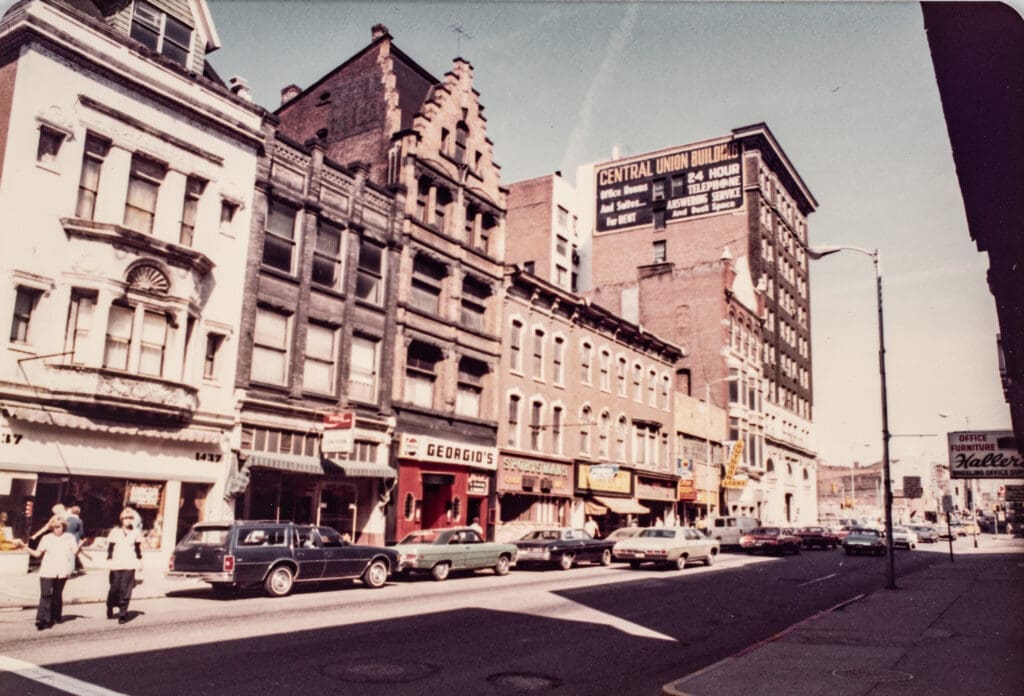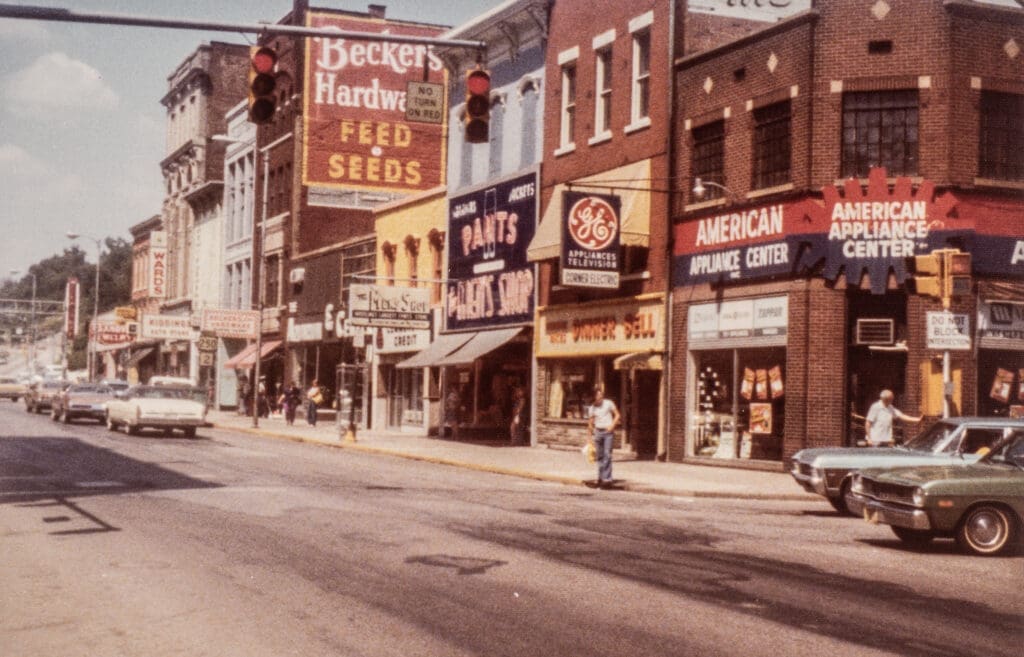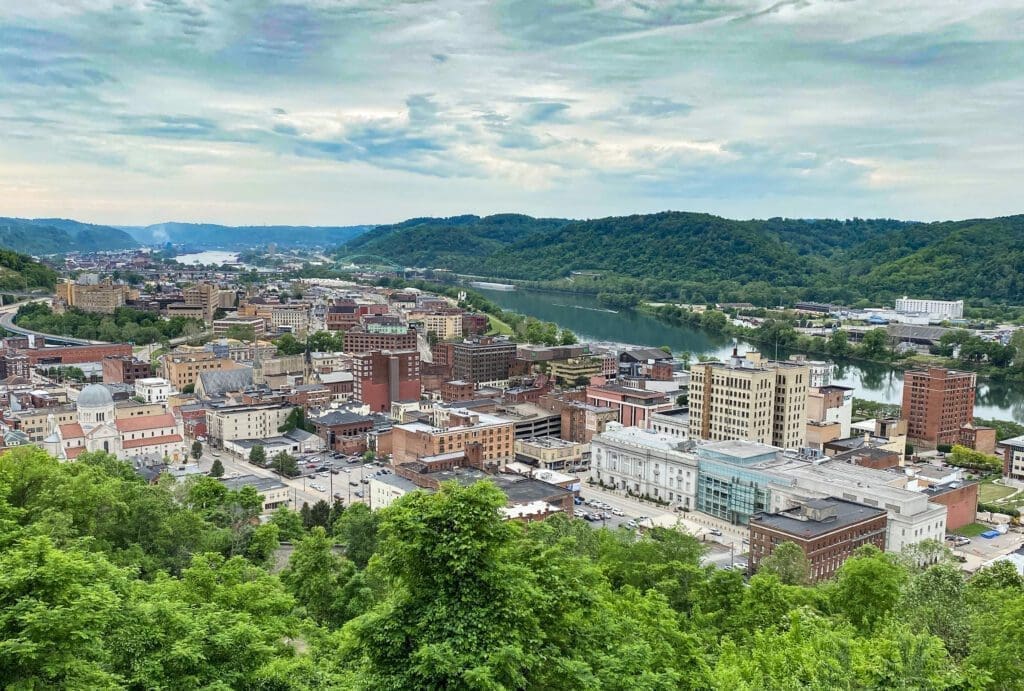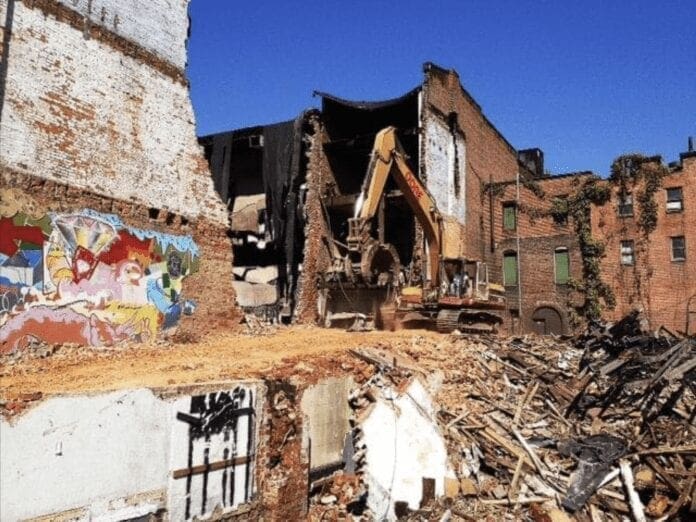(Publisher’s Note: Now that the streetscape is nearly complete and Kurt Zende has returned to the City as its Economic Development specialist, local residents hope to see what the downtown area can become in the future.)
It’s taken nearly a half-century for downtown Wheeling to almost come full circle after the opening of the Ohio Valley Mall on October 4, 1978.
The under-roof shopping center debuted that day near St. Clairsville with several shops consumers had only heard about, like Foot Locker and Merry-Go-Round and Spencer’s. But the mall, constructed and still owned by the Cafaro Co. of Youngstown, also featured a number of retailers local residents knew very well from visiting Main and Market streets in downtown Wheeling.
There were anchor stores like Sears, JC Penney, and L.S. Good and smaller shops like National Record Mart, and Thom McAn, and all were staples in the Friendly City for decades.

So, it was a bad day for Wheeling, and a puzzling one for the municipality’s then-30-year-old city manager Wayne Barte.
“When the mall was announced for that area near St. Clairsville, we knew it wasn’t good for Wheeling and our downtown. And we saw businesses leave for the mall because the mall model was what people wanted at the time. They wanted a level downtown that was all under roof,” Barte recalled. “I know the people of Wheeling rejected that downtown mall project back in the 1960s, but the mall out near St. Clairsville was a completely different project and a completely different model.
“Once some of the businesses in downtown Wheeling closed and left for the Ohio Valley Mall, there were some new businesses that went into a few of the vacant buildings, and they were around for a while, but it was the ongoing population loss that was really hurting the city the most. People moved away for better opportunities,” he explained. “That led to a lot of demolitions in the downtown over the years, and a lot of parking lots, and no one was happy about that.”
The Southdale Center in Edina, Minn., was the very first modern mall when it opened in 1956, and thousands more of the under-roof outlets followed across the country. The ripple effects not only decimated retail in downtown Wheeling, but also in small downtown districts throughout the northern panhandle and East Ohio.
“You couldn’t stop it (the mall). There was no way to stop what was happening,” Barte said with a matter-of-fact tone. “Malls became the fashionable thing. It’s where everyone went; the kids, the parents; everyone, and we had to accept that it was the new way people were going to shop because there was nothing to stop it.
“And now, places like The Highlands are the more popular places to shop for whatever reasons. It’s where people want to shop now,” he said. “The Highlands, and online, of course.”

Never Say Die
One after another, downtown demolitions have taken place. In fact, in the early 2010s, most of the 1100 block of downtown Wheeling was torn down to make way for whatever might be next.
While parking lots and green spaces drew criticisms from residents, the same brand of downsizing was taking place in neighborhoods, too, as a city of 61,000 in the 1940s continued to shrink to less than half that size. But Barte, now 78 and living with his wife in the Cincinnati area to be close to their son, his wife, and their two granddaughters, has grown impressed with Wheeling’s survival instinct.
“I’ve seen a lot of cities that were just like Wheeling once with the business hub in the downtown and they had the neighborhoods, too, like Wheeling does,” Barte said. “But those cities have not fared as well as Wheeling has. That may be tough for some to believe, but I’ve seen it and it’s true. Wheeling has repurposed itself. Look at what the headquarters The Health Plan put up in the 1100 block of downtown. That doesn’t happen in other places, trust me.
“We lived in our house in Wheeling for almost 50 years, and we watched the city survive,” he said. “I also worked at Oglebay for 13 years and was part of the tennis community, and my wife (Maureen) was a member of the ladies golf club, so we took advantage of some of the amenities that have kept the city relevant for a lot of people.”

Live. Work. Play.
That’s the recipe for resuscitating a scarred and amputated town, and Wheeling’s city government has taken the slow-but-sure steps over the past couple of decades to enhance the riverfront, improve above- and below-ground infrastructure, to clear dilapidation while preserving the city’s history, and to evolve a commercial downtown into a residential neighborhood.
“There is one thing about downtown Wheeling now that really strikes me and that I never expected, and that’s all of the downtown housing there is so far,” Barte said. “There are the Stone Center Lofts, the Boury Lofts, and now The Doris, and if those developments are successful, I can see more being built because people seem to really like to live in downtown districts these days.
“Now, we’ll watch what follows as far as economic development,” he said. “As far as the housing, I never would have guessed in a hundred years that quality housing would be an ingredient in downtown Wheeling. But now that it has, I expect the private sector to follow, and that’s exciting.”

Once the downtown streetscape is completed sometime this fall, the city of Wheeling will check a lot of boxes – infrastructure, safety, education, and recreation – and the Friendly City could be on the cusp of, well, something better than before.
Barte agrees.
“I really have to give the folks in Wheeling credit because they’ve never surrendered. Sure, some people left, but that’s not the people I’m talking about. I’m talking about the people who stayed, and the people who moved but then went back to Wheeling. They keep fighting for that quality of life, and I think it’s paying off now,” Barte said. “They’ve reinvented the town into something that works, and it’s pretty awesome to see.
“With the parks the city has, and the river, and the four seasons, and now the new infrastructure, I think the city of Wheeling has the opportunity to grow,” he added. “I believe we can say Wheeling is headed in the right direction after a lot of years of people fighting to get here. There’s no one person or one decision that did it. It’s the determination of a lot of people through the years.”



Wayne, I totally agree with everything you said. The evolution has been a marvel to behold. However, Wheeling has yet to prove that it will survive the “population apocalypse.” I’m not saying that it won’t. Nor am I saying that it will. What I am saying is that Wheeling is still leaking people. One can only hope that the “build it and they will come” theory will take root and the population decline will reverse itself.
My possible solution is for Wheeling to market it’s new self as a very attractive bedroom community to Allegheny and Washington County. The city and Ohio County need to have a cooperative focused effort to that end. That working relationship has got to improve! The cost of living in both of those PA counties is
considerably higher than in Ohio County and concept of bedroom community seems to be working for Weirton. Whether it be this approach or another, Wheeling must stop bleeding population or all of this infrastructure effort will not stop the population apocalypse.
The population loss in Wheeling has slowed greatly during the past two decades, so that’s good news, and it’s true the Wheeling area needs more living-wage jobs. Hopefully, the city’s new leadership will be more successful with economic development than the last was because we’ve added little in that area over the past 8 years.
I believe the city has also become a “music city”
and needs to promoted as such as well.
How many cities can you name where you can
enjoy great entertainment every night in the
summer. The other 9 months offers a number
of opportunities as well, and need to be
expanded.
The more small venues that pop up downtown
or Center Market can add to this and make
Wheeling an even better place to “live, work
and play.”
Comments are closed.